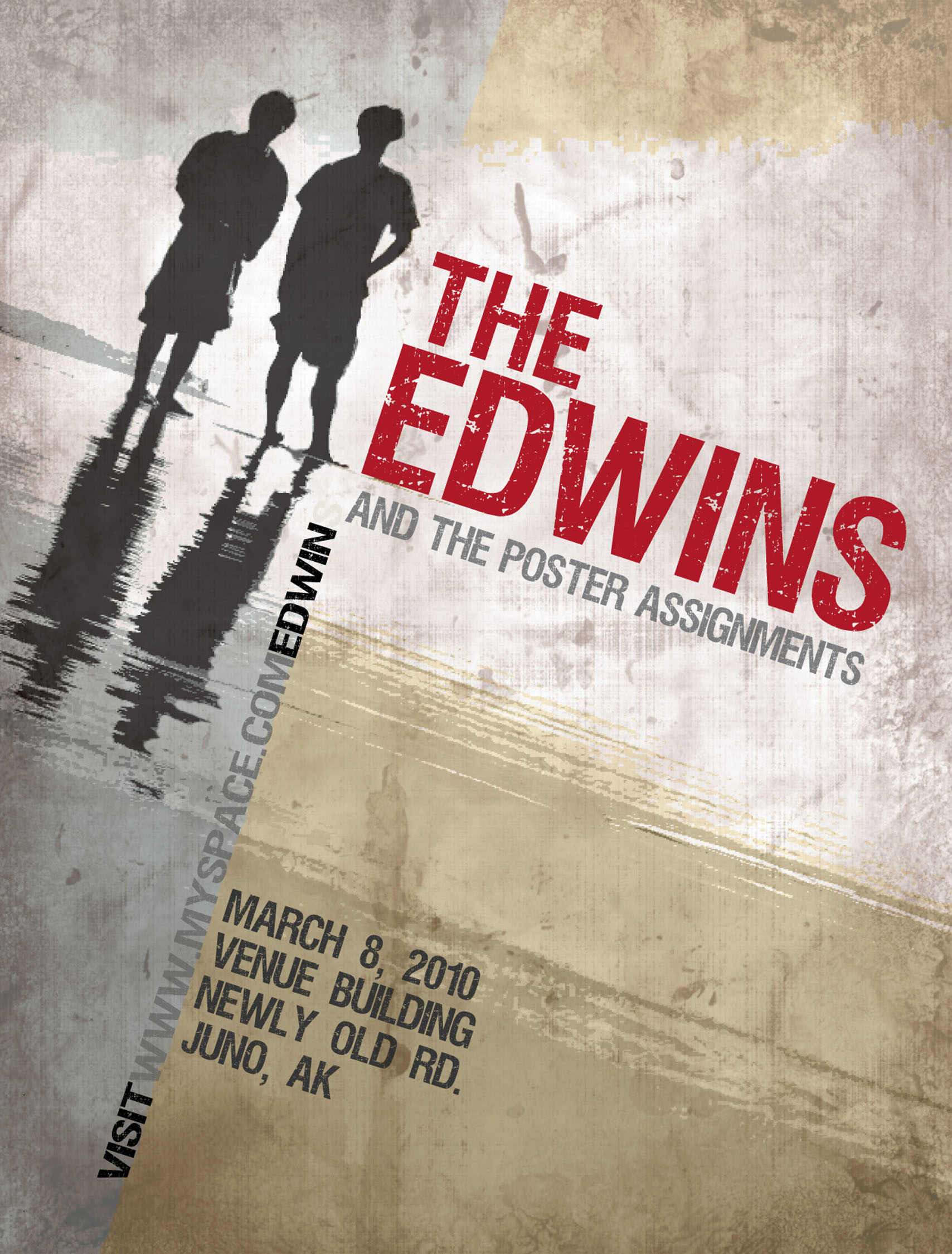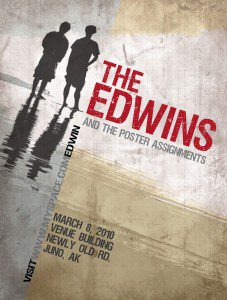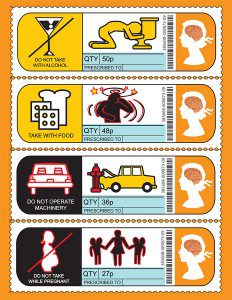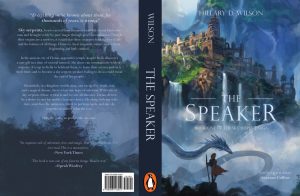The best places to start learning about our Portfolio Categories are the Sample Portfolio page and the Admissions Page.
For Graphic Design, the faculty are looking for, “layouts that integrate image and typography for a pre-selected format and audience. Client oriented visual communication projects.” They ask for a minimum of 2 graphic design pieces in the admissions portfolio.
Examples of graphic design can vary in audience and purpose. They might include a brand package (logo with matching business card, letterhead, and envelope), a menu cover, a page from a calendar, “how-to” instructions, a poster or advertisement. Submissions typically convey a particular message to a particular audience. The vast majority of graphic design is created at least in part using a layout program like Adobe InDesign or Illustrator where imagery and typography are combined.
Take a look at the novel prescription warnings above. While the admissions faculty at Hopkins would have preferred these not include the image of the brain within the silhouette on the right (remember, no anatomical illustration in the portfolio!), the imagery and text to the left convey a clear message. Direct and to the point, the four warnings leave no doubt that potential side-effects are possible.
Some graphic design projects begin as a class assignment. For example, a student can make an event poster or a book cover. The samples above and at right capture the viewers interest and convey information even when the event or book were imaginary. The sample for Awake Cafe and Bakery shows the students’ ability to design with and manipulate the typography to create a logo that depicts the imaginary brand.
As with all portfolio categories, please avoid medical, anatomical, physiological or similar subject matter. Our faculty create, teach, and most importantly critique art of this subject matter for a living. Naturally, they are more critical of medical illustration than art of any other subject.
If you have additional questions, don’t hesitate to contact us – [email protected] or Request Information.
Best,
Ebony,
Thank you for your help with this post Jeni!
More posts in the Admissions Blog.





